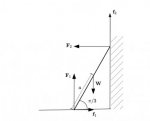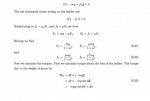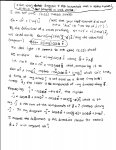Hello,
Can someone please just clarify my notes for me, i really cant understand how my teacher gets \(\displaystyle j = - cos \phi \hat{\phi}-sin \phi \hat{r}\)
I have attached the question and solution, but i have no idea how to work out j, the unit vector in terms of phi and r, please can someone show me how to work this out from first principles?
Can someone please just clarify my notes for me, i really cant understand how my teacher gets \(\displaystyle j = - cos \phi \hat{\phi}-sin \phi \hat{r}\)
I have attached the question and solution, but i have no idea how to work out j, the unit vector in terms of phi and r, please can someone show me how to work this out from first principles?




